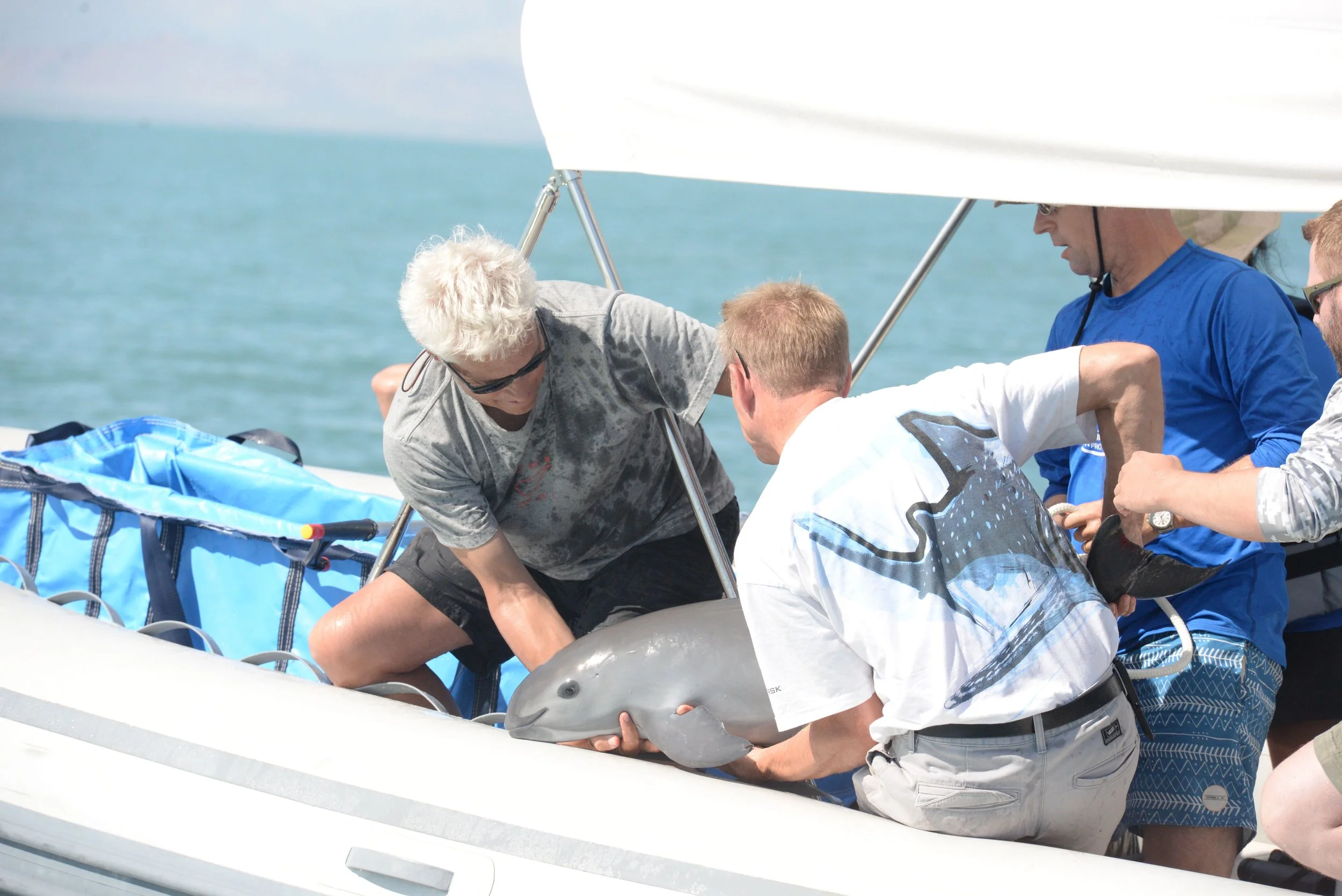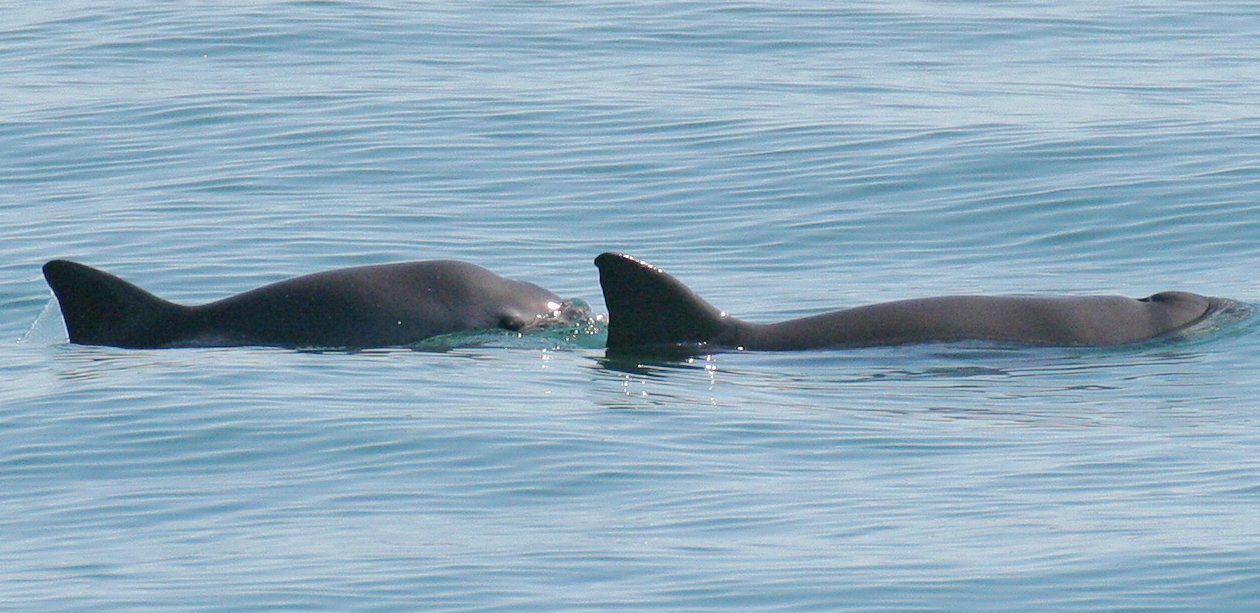October 18, 2017 — the first vaquita (V01F) captured during the Vaquita Conservation, Protection & Recovery Project. Credit: VaquitaCPR.
Genomes making waves for Critically Endangered Marine Mammals
Recently, the Cetacean Genomes Project, Darwin Tree of Life, and the Vertebrate Genomes Project joined forces to publish a paper highlighting 18 high-quality whale and dolphin genomes (Morin et al., 2025). The authors took advantage of chance strandings of these marine giants to obtain samples from hard-to-find species like the critically endangered Rice’s whale, North Atlantic right whale, and vaquita porpoise. Extracting high-quality DNA from these opportunistic sampling events often requires specialized DNA extraction techniques, particularly if the sample is old or degraded. Notably, new enzyme mixtures can boost sequence length and coverage when working with degraded or hard-to-process samples (Bein et al., 2025). Reference genomes from threatened species like these are the jumping-off point for downstream population genomics studies, which can identify potential for inbreeding depression and help to develop appropriate conservation strategies for the species most at risk of extinction. For example, the team leveraged the genome of the vaquita porpoise—one of the most endangered mammals globally with fewer than 10 mature adults in the wild—to determine that, surprisingly, the species has an extremely low mutational load. They concluded, based on conservation planning models, that inbreeding depression, a common risk for very small or bottlenecked populations, is unlikely to pose a major concern for vaquita conservation and recovery (Robinson et al., 2022). Unfortunately, accidental bycatch in the illegal wildlife trade of another endangered species, the totoaba, remains a major threat to the species’ survival.
Phillip Morin, head of the EBP-affiliated Cetacean Genomes Project, emphasized the importance of rapid access to reference genomes for advancing conservation efforts to protect marine mammals at risk of extinction:
“These genomic resources are catalyzing studies on health, evolution, taxonomy, adaptation, and vulnerabilities across whale, dolphin, and porpoise species.”
Continued conservation efforts—and new genome-informed approaches made possible by this reference genome—offer hope that science and stewardship together can help secure a future for this remarkable marine mammal.
A mother and calf vaquita surface in the waters off San Felipe, Mexico. Credit: NOAA Fisheries / Paula Olson, 2008.



